The American Revolution 1774–1783
The American Revolution has been characterized politically as a united political uprising of the American colonies and militarily as a guerrilla campaign of colonists against the inflexible British military establishment. Daniel Marston argues that this belief, though widespread, is a misconception. He contends that the American Revolution, in reality, created deep political divisions in the population of the Thirteen Colonies, while militarily pitting veterans of the Seven Years' War against one another, in a conflict that combined guerrilla tactics and classic eighteenth century campaign techniques on both sides. The peace treaty of 1783 that brought an end to the war marked the formal beginning of the United States of America as an independent political entity.
Campaign
Point Pleasant 1774
The only major conflict of Lord Dunmore's War, the battle of Point Pleasant was fought between Virginian militia and American Indians from the Shawnee and Mingo tribes. Following increased tensions and a series of incidents between the American settlers and the natives, Dunmore, the last colonial governor of Virginia, and Colonel Andrew Lewis led two armies against the tribes. On October 10, 1774 Lewis and his men resisted a fierce attack, led by Shawnee chief Keigh-tugh-qua, or Cornstalk, at Point Pleasant, near the mouth of the Kanawha river. Despite significant losses on both sides, Lewis succeeded in forcing the Shawnee to retreat back to their settlements in the Scioto Valley. In the aftermath of the battle the Treaty of Camp Charlotte was signed in attempt to secure peace in the region and ultimately opened up Kentucky for American settlement. Illustrated with photographs, detailed maps and bird's-eye-views, this title brings to life one of the most significant pre-Revolutionary conflicts between American settlers and the native tribes.
Point Pleasant 1774
The only major conflict of Lord Dunmore's War, the battle of Point Pleasant was fought between Virginian militia and American Indians from the Shawnee and Mingo tribes. Following increased tensions and a series of incidents between the American settlers and the natives, Dunmore, the last colonial governor of Virginia, and Colonel Andrew Lewis led two armies against the tribes. On October 10, 1774 Lewis and his men resisted a fierce attack, led by Shawnee chief Keigh-tugh-qua, or Cornstalk, at Point Pleasant, near the mouth of the Kanawha river. Despite significant losses on both sides, Lewis succeeded in forcing the Shawnee to retreat back to their settlements in the Scioto Valley. In the aftermath of the battle the Treaty of Camp Charlotte was signed in attempt to secure peace in the region and ultimately opened up Kentucky for American settlement. Illustrated with photographs, detailed maps and bird's-eye-views, this title brings to life one of the most significant pre-Revolutionary conflicts between American settlers and the native tribes.
Boston 1775: The shot heard around the world
The British assault on Breed's Hill and the burning of Charlestown were the first major battles of the American Revolution; after the events at Boston there was no turning back. This detailed text by Brendan Morrissey explores the opposing commanders and forces involved, whilst describing how the sparks at Lexington and Concord ignited the smouldering resentment of the Colonists into the flame of a rebellion. Colonist militia were pitted against British Redcoats in a series of struggles which led the British to evacuate Boston and to George Washington taking command of the fledgling American army.
Quebec 1775
The American attack on Quebec in 1775 was a key episode in the War of Independence. Capture of the city would give the Americans control of Canada - a disaster for the British. The subsequent campaign involved a 350-mile trek across uninhabited wilderness, a desperate American attack on the city of Quebec that left one American general dead and another wounded, and a British counterattack that culminated in a brutal naval battle off Valcour Island on Lake Champlain. In this book Brendan Morrissey details the events of this ferocious struggle whose results would have such momentous consequences at Saratoga in 1777.
New York 1776
General Sir William Howe's New York campaign gave the British their best chance of destroying the Continental Army and George Washington's resistance to colonial power. Howe succeeded in dividing the Continentals, defeated them on Long Island and forced Washington to retreat to Brooklyn Heights. Under siege there, Washington successfully crossed the East River to Manhattan but soon had to fall back on Harlem Heights. After a few weeks Howe forced the Continentals north to White Plains and defeated them again. However, he allowed Washington to withdraw and preserve his army when a more aggressive pursuit could have ended the war. Instead, with the British army rapidly weakening and facing huge manpower shortages, Washington emerged from a succession of defeats to produce what was ultimately a war-winning strategy. The author provides fascinating insights into a unique campaign in which a string of British victories ultimately led to failure and defeat.
Trenton and Princeton 1776–77
Pursued by British forces, Washington and his remaining 5,000 men resolved on a risky strike against the British and Hessian positions across the Delaware River. Crossing the river, Washington took the Trenton garrison for the loss of only four men, before outflanking Cornwallis' 8,000-strong force and marching on Princeton. His military reputation established, Washington's victory restored American morale and turned the tide of the war.
Philadelphia 1777
A turning point in the War of Independence, the campaign for Philadelphia set in motion a series of events leading to the defeat of the British and eventual independence for the emerging American nation. From the landing of General William Howe's army at the head of the Elk River, to his eventual capture of Philadelphia, the campaign included some fascinating battles. The initial engagement at Brandywine, the Paoli Massacre and the missed opportunity at Germantown are all examined in detail by Justin Clement, with supporting maps, original artwork and photographs. Recently discovered information about the battle of Brandywine and analysis of the major personalities involved completes this comprehensive account.
Saratoga 1777
The Saratoga campaign was a watershed, and is widely believed to have been the turning point of the American War of Independence. For the first time British regulars were beaten in open battle by equal numbers of Americans. The Continentals bore the brunt of the fighting, supported by 'hordes' of militia who proved adept at attacking detachments or lines of communication.The after-shock in America (on both sides) and Europe transformed a civil war into a global struggle against the two colonial superpowers of the day, France and Spain, and eventually lost George III his American colonies.
Monmouth Courthouse 1778
The battle of Monmouth Courthouse was not only the last major action in the Northern theater, it was also the longest and hardest-fought engagement of the entire Revolutionary War. When the British abandoned Philadelphia to return to New York City, American troops harassed their retreat. On the morning of 28 June 1778, General Lee, George Washington's lieutenant, attacked the British rearguard but his attack went badly wrong. The British rearguard, now reinforced, threw Lee's troops into a headlong retreat. Lee was relieved of his command and Washington's Continentals then stood toe-to-toe with the British, bloodily repulsing a series of powerful attacks by crack troops.
Yorktown 1781
By 1781 Britain's struggle to contain the rebels in her American colonies had reached an inglorious stalemate. Six years on from the British defeat by the New England militia at Boston, George Washington's rebuilt Continental Army with support from the French now systematically began to seek out and destroy British forces even if protected by seemingly impregnable defences. Yorktown would be a salutary lesson to the British Crown about the odds she now faced in holding on to her colonies.
Guilford Courthouse 1781
By the Spring of 1781, the American Revolutionary War had dragged on for almost six years and the outcome still hung in the balance. When the British commander Lord Cornwallis launched his invasion of North Carolina in early 1781, his objective was to destroy General Nathaniel Greene's American army. At Guilford Courthouse on 15 March 1781 the two armies met. In a desperately hard-fought battle the small but professional British army succeeded in fighting its way through three separate lines of American troops - but at a dreadful cost. Cornwallis lost over a quarter of his command. When news of the ‘victory' reached Britain, a politician remarked; ‘Another such victory would ruin the British army'.
Wabash 1791
The battle of the Wabash, or St Clair's Defeat, was the greatest ever victory of American Indians over US Army forces. In 1791, Revolutionary War commander Arthur St Clair led a hastily recruited American army into Ohio in an attempt to wrest control of the area from its Indian inhabitants. Hindered by geographical ignorance, difficult terrain, bad weather, and a lack of supplies, the Americans advanced slowly through the wilderness. After a month, they reached the Wabash River, where an Indian army awaited them. On a cold November morning, the Indians attacked at dawn and three hours later the Americans fled, having suffered more than 60 percent casualties. In this book, author John F. Winkler re-examines the US Army's frontier disaster, analyzing what they did wrong and how the Indians achieved their crushing victory.
Fallen Timbers 1794
Following the defeat at Wabash, in 1792 the Washington administration created a new US Army to replace the one that had been destroyed. The man chosen to lead it was the famous Major-General "Mad” Anthony Wayne. Having trained his new force, Wayne set out in 1793 to subdue the Ohio Indians. Wayne faced many of the same problems as St Clair including the logistical and intelligence problems of campaigning in the wilderness, not to mention the formidable Ohio Indians. Wayne faced additional problems including the likelihood that he would have to fight both British and Spanish forces, not to mention an American army led by the celebrated commander George Roger Clark. He also faced an insurrection in western Pennsylvania, "Whiskey Rebellion”, and a conspiracy led by many of his officers and contractors. Despite all these difficulties, Wayne managed to defeat the Ohio Indians at the battle of Fallen Timbers. This was a decisive defeat that led directly to the Treaty of Greeneville the following year which ended 20 years of conflict between the Americans and the Ohio Indians.
Combat
Continental vs Redcoat
The American Revolutionary War pitched the newly formed Continental Army against the professional British Redcoats - a highly trained organization manned by long-serving and experienced infantrymen with a formidable reputation forged on European battlefields during the Seven Years' War. So, how were the poorly trained, poorly supplied Continental infantry able to hold their own and shape the outcome of the Revolutionary War and establish the future of their young nation? David Bonk answers this question in a highly illustrated book that looks at the challenges facing both armies, weighing up how each side was able to cope with the day-to-day experiences of the war and using extensive first-hand accounts to allow a modern audience to experience what life was like for soldiers on and off the battlefield during the war.
Command
Duel
Elite
American War of Independence Commanders
The commanders who led the opposing armies of the American War of Independence came from remarkably different backgrounds. They included not only men from Britain and America, but from Germany, France and Spain as well. Some were from the great families of the "Old World", while others were frontiersmen or farmers in the "New World". Despite their differing origins, all were leaders in the events that led to the establishment of the United States of America. This book details the appearance, careers and personalities of the commanders on both sides. It covers such famous figures as George Washington and Lord Cornwallis along with less well-known men such as Admiral Suffren and Bernando de Galvez.
Fortress
Forts of the American Frontier 1776–1891
With the violent separation between the United States and Britain which began in 1776, the new 'Americans' set off to fulfill their manifest destiny and rule their new land from coast to coast. As they pushed westward, they came into conflict with both natives and other European settlers, and began to build fortresses to defend their newly claimed land. This book charts the development and variation of the fortresses of the American Frontier, covering both American defenses and those of the Spanish in the west. It also examines the little-known forts of early Russian settlers on the Pacific coast.
Spanish Colonial Fortifications in North America 1565–1822
To maintain its imperial power in America, Spain built fortifications across the width of the continent. These outposts were established along Spanish borders from the late sixteenth century onwards to defend its interests against rival European powers and to suppress uprisings of the Native Americans and local population. By the eighteenth century, Spain's defenses spread from the northern area of the Gulf of Mexico through to California. Some of these imperial fortifications, such as the Alamo, played key roles in conflicts including the American Revolution and the Texan War of Independence. This book provides a cogent analysis of Spain's defensive network at the height of the country's imperial strength on the American continent.
Men-at-Arms
General Washington's Army (1)
During the period 1775-78, General Washington commanded three separate armies: the New England Army of 1775; the one-year army of the United Colonies, renamed Army of the United States in July 1776; and the forces established by the Continental Congress to serve for three years from January 1777, or for the duration. In this, the first of two studies by Marko Zlatich (Men-at Arms 290 continues the treatment, covering the period from 1779-83), the systems used by state and Continental authorities to procure clothing materials, the quantities they obtained and the specifications of the uniforms themselves are all examined in detail. Men-at-Arms 273, 285, 289, 290 and 292 are also available in a single volume special edition as 'Soldiers of the Revolutionary War'.
General Washington's Army (2)
For the early years of the American War of Independence, George Washington's troops were clothed in a variety of uniforms from various sources. With the receipt in late 1778 of over 25,000 uniforms imported from France, much of the Continental army was uniformly clothed in blue or brown coats faced with red. This study by Marko Zlatich focuses on the systems used by state and Continental authorities to procure clothing materials from this point onwards, the quantities they obtained and the specifications of the uniforms themselves. Eight colour plates by the talented Bill Younghusband and a plethora of black and white photographs and illustrations usefully support the author's detailed text. Men-at-Arms 273, 285, 289, 290 and 292 are also available in a single volume special edition as 'Soldiers of the Revolutionary War'.
King George's Army 1740–93 (1)
To most contemporary politicians the 18th century British Army was no more than an unwelcome necessity in wartime and an unjustifiable extravagance in peacetime. Nevertheless, the overall impression which is to be gained from a close study of the Army's own records, and from the surviving letters, diaries and memoirs, is that the British Army of the 18th century was very little different in character or in spirit from today's British Army. It was, above all, a force which was led, not driven, into battle. This book looks at the uniforms and organisation of the infantry of King George's Army.
King George's Army 1740–93 (2)
The 18th century was marked by a steady growth in central control of the British Army and a corresponding decrease in the influence enjoyed by individual commanding officers. The most obvious sign of this process was the increasing uniformity of the clothing issued each year to the soldiers. Nevertheless, as far as those who devised the Clothing Regulations were concerned, it was a constant, and invariably quite uphill struggle to enforce compliance. This companion volume to Men-at-Arms 285 takes a further look at the infantry uniforms of the mid-18th century British Army, also covering the various auxiliary infantry formations, such as the Militia, Volunteers, Marines and the troops of the East India Company. Men-at-Arms 273, 285, 289, 290 and 292 are also available in a single volume special edition as 'Soldiers of the Revolutionary War'.
King George’s Army 1740 - 93 (3)
The 18th century was marked by a steady growth in central control of the British Army and a corresponding decrease in the influence enjoyed by individual commanding officers. The most obvious sign of this process was the increasing uniformity of the clothing issued each year to the soldiers. Nevertheless, as far as those who devised the Clothing Regulations were concerned, it was a constant, and invariably quite uphill struggle to enforce compliance. This companion volume to Men-at-Arms 285 and Men-at-Arms 289 examines the organization and uniforms of King George's cavalry and artillery together with those of the Board of Ordnance.
The British Army in North America 1775–83
For sheer guts, the Redcoats' behaviour at Bunker Hill, Saratoga and other bloody encounters has rarely been surpassed. The Americans won, but only just, and then thanks to foreign intervention and a small number of dedicated and valiant patriots who were continually let down by their own people. Robin May's splendid work looks at the British Army that fought in the American Revolution from 1775 to 1783. It details the soldiers who faced the difficulties of campaigning in America along with the gross inefficiency and corruption at home which, along with their generals' often blundering conduct, were as deadly enemies as the Americans.
British Forces in North America 1793–1815
The end of the American Revolution in 1783 confirmed the independence of the republic of the United States of America from Great Britain. Britain, however, still managed to make its presence felt in North America. Britain's Orders in Council concerning trade were a major irritant which, added to other issues including the sale of Louisiana and the impressment of American soldiers by the Royal Navy, finally caused the United States to declare war on 19 June 1812. This volume examines in detail the organisation, tactics and equipment of the British forces between 1793 and 1815.
The Spanish Army in North America 1700–1793
Long before England established a serious presence in the New World, Spain had already established an overseas Empire. In North America, this included vast tracts of territory including most of what today comprises the states of Florida, Arizona, Nevada, New Mexico, Texas, Alabama, Illinois and California. In later years, as the British and the French came to expand their claims, they often came into conflict with the Spanish. The Spanish also played a significant part during the American Revolution, fighting against the British and drawing off forces needed to fight the Americans. This book covers all of the North American Spanish forces that fought in the campaigns of the 18th century.
The French Army in the American War of Independence
The French forces that fought during the American War of Independence were, to a large extent, a product of the disasters of the Seven Years' War (1756-1763). During that war the fleet had been swept off the oceans, and nearly all colonies had been lost. Sweeping reforms were demanded. From the end of 1762 a series of royal orders dictated by common sense and good planning were signed by the king, and a vast reorganisation was started, ensuring that the army that fought in the American War presented a very different, altogether more formidable threat to her foes.
American Loyalist Troops 1775–84
To celebrate the 450th title in the Men-at-Arms series, this book examines in much more depth than previously the units and the uniforms of a still-controversial army: the many thousands of American colonists who chose to fight for King George during the Revolution. As well as the better-known corps from the Atlantic seaboard, the author covers the units raised for service against the Spanish in the Floridas, the Caribbean islands and Central America. The text is illustrated with portraits, photographs of rare surviving artefacts, and with color reconstructions by Gerry Embleton, the respected expert on 18th century American forces whose work was recently exhibited in the Smithsonian Institute.
The American Provincial Corps 1775–84
Initially British officials were reluctant to accept the offers of loyal subjects to form fighting units but eventually the potential of a Provincial corps was realized. Yet they never received the whole-hearted support of the British regular army and this was a factor in their evental defeat. Nonetheless the Provincial Corps served with distinction - even fighting against the Spanish in Nicaragua and the Bahamas - and some remained in service for several more years by relocating to Canada. This book examines their experiences in this continental conflict and details their uniforms and equipment.
New Vanguard
Ships of the American Revolutionary Navy
Mark Lardas explores the origins of American warships, primarily light and medium frigates, built for the Continental Navy during the years 1776-1783. This was the first navy of the United States and much of the fleet was comprised of ships that had been modified from existing vessels, converted into warships to provide a crucial service during the American Revolutionary War. Despite having no real funding, this unique fleet had a surprising amount of success against the might of the Royal Navy, and this title discusses the strengths and weaknesses of each design, and the differences between European and American warships of the time. With a close look at how these ships performed in key battles, as well as the exploits of John Paul Jones - the founding father of the United States Navy - this is a complete, illustrated overview of the ships' service and development until France's entry into the war and the subsequent decline in importance of the Continental Navy.
Raid
The Swamp Fox
The American Revolution was deadlocked in the north, and in 1778, the focus of the conflict shifted south. Following his decisive 1780 victory at Charleston, Cornwallis launched a campaign through the Carolinas that was designed to expel American Continental and militia forces from the south. The subsequent patriot victory at King's Mountain forced Cornwallis to withdraw into South Carolina in what was one of the turning points in the Revolutionary War. To the southeast, Francis Marion enacted a series of successful hit-and-run operations. Cornwallis responded to this string of raids by assigning Banastre Tarleton to capture or kill the rebel guerrilla commander. What followed was an unsuccessful pursuit of the elusive Marion, in which Tarleton practiced a scorched-earth policy that ultimately disillusioned Loyalist sympathizers and hurt the British cause in the Carolinas. This book highlights the unique style of southern frontier warfare during the Revolutionary War, and how its combatants were supplied, organized, and operated. The series of actions between August and November 1780 illustrate Marion's unconventional efforts to hinder their enemy's war effort in the south- earning him his Swamp Fox moniker- and Tarleton's equally irregular efforts to counter it.
Continental Infantryman of the American Revolution
America raised three distinct forces to win its revolution: untrained, short-service militiamen; state troops; and the regular Continentals. The latter were the backbone of the army, providing a disciplined and effective fighting force. Some infantrymen served with Arnold's Lake Champlain fleet as marines, while others fought conventionally in sieges and field battles. This book takes a close look at the Continental infantryman of the period examining all facets of their daily life including recruitment, training, service conditions and combat experiences. Many armies have saved their nation: the Continentals helped build theirs.
Patriot Militiaman in the American Revolution 1775–82
The American Revolution was a decisive conflict, which saw the birth of a new nation. Continental Army regulars fought in massive and famous battles from New England to Virginia, but in the South a different kind of warfare was afoot. Local militia, sometimes stiffened by a small core of the Continental Line, played a pivotal role. This lesser-known war ultimately decided the fate of the Revolution by thwarting the British "Southern strategy". In this title, the authors provide a unique and personal focus on the history of their own ancestors, who fought for the South Carolina Militia, to show just how effective the irregular forces were in a complex war of raids, ambushes, and pitched battles. The book explores the tactics, equipment, leadership and performance of the opposing Patriot and Rebel forces, shining new light on the vicious struggle in the South.
British Rifleman 1797–1815
The rifle corps of the British Army during the Napoleonic Wars are among the most recognisable of all the soldiers of that era: their distinctive dark green uniforms are as familiar as some of their exploits. They have achieved considerable fame through the large numbers of memoirs written by members of the rifle corps as well as through modern fiction, most notably the Sharpe series. Apart from their reputation as a corps d'elite, the riflemen were, in their time, at the very cutting edge of military technology and tactical theory. Philip Haythornwaite here uses fascinating first hand accounts and detailed research to give a 'soldier's-eye view' of the British Rifleman, his life and work.
Soldiers of the Revolutionary War
This book combines Men-at-Arms 273: ‘General Washington's Army (1) 1775-75', Men-at-Arms 285: ‘King George's Army 1740-93 (1)', Men-at-Arms 289: ‘King George's Army 1740-93 (2)', Men-at-Arms 290: ‘General Washington's Army (2) 1778-83' and Men-at-arms 292: ‘King George's Army 1740-93 (3)'. This book examines in complete detail the uniforms and equipment used by the rival armies of George Washington and King George in the American Revolutionary War. General Washington's three armies, the New England Army, the Army of the United States and the forces of the Continental Congress obtained their clothing from a variety of sources, until the receipt of 25,000 uniforms imported from France in 1778 allowed the majority of Washington's men to be dressed in uniform brown and blue. This book looks into the methods whereby these uniforms were procured, as well as investigating the gradual standardisation of the dress and equipment of King George's army over the same period.
The History of Weapons of the American Revolution
From the pike to the pistol, the sword to the rifle, George C. Neumann traces the weapons of the Revolutionary War period. Drawing upon his own and numerous public and private collections, the author has assembled far and away the most complete gallery available of polearms, swords, firearms and military accessories. 1200 photographs and a bonus short 500-year evolutionary history of the world's hand firearms.
Washington's Crossing (Pivotal Moments in American History)
Six months after the Declaration of Independence, the American Revolution was all but lost. A powerful British force had routed the Americans at New York, occupied three colonies, and advanced within sight of Philadelphia. Yet, as David Hackett Fischer recounts in this riveting history, George Washington-and many other Americans-refused to let the Revolution die. On Christmas night, as a howling nor'easter struck the Delaware Valley, he led his men across the river and attacked the exhausted Hessian garrison at Trenton, killing or capturing nearly a thousand men. A second battle of Trenton followed within days. The Americans held off a counterattack by Lord Cornwallis's best troops, then were almost trapped by the British force. Under cover of night, Washington's men stole behind the enemy and struck them again, defeating a brigade at Princeton. The British were badly shaken. In twelve weeks of winter fighting, their army suffered severe damage, their hold on New Jersey was broken, and their strategy was ruined. Fischer's richly textured narrative reveals the crucial role of contingency in these events. We see how the campaign unfolded in a sequence of difficult choices by many actors, from generals to civilians, on both sides. While British and German forces remained rigid and hierarchical, Americans evolved an open and flexible system that was fundamental to their success. The startling success of Washington and his compatriots not only saved the faltering American Revolution, but helped to give it new meaning.
King George's army, 1775-1783 A handbook of British, American and German regiments
Encyclopedia of Continental Army Units: Battalions, Regiments and Independent Corps
This reference pulls together the organizational history of each battalion, regiment, and independent corps that served in the Continental army.
Landmarks of the American Revolution
A guide to locating and knowing what happened at the sites of Independence.
The Civil War Dictionary
For almost thirty years The Civil War Dictionary has been the most complete, authoritative, and handy reference book on what has been called the Second American Revolution, 1861-1865. Periodically updated throughout sixteen printings, this invaluable volume has more than 4,000 entries, alphabetically arranged and carefully cross-referenced. Among them:
2,000 biographical sketches of Civil War leaders. both military and civilian
extensive descriptions of all 20 campaigns and entries on lesser battles, engagements and skirmishes
120 armies, departments, and districts, as well as such famous smaller units as the Iron Brigade, the 20th Maine, and the Pennsylvania Reserves
plus naval engagements, weapons, issues and incidents, military terms and definitions, politics, literature, statistics, and 86 specially prepared maps and diagrams.
An Illustrated Encyclopedia of Uniforms from 1775-1783 The American Revolutionary War
Contains a wealth of pictorial detail, with over 600 images, including fine-art paintings and color illustrations of uniforms and weapons, providing an unrivaled source of information on the appearance and experience of the fighting men of the period.
Battles of the American Revolution: 1775-1781
Battles of the American Revolution: 1775-1781 was written by Henry Beebee Carrington in 1876. This is a 814 page book, containing 301100 words and 52 pictures.
Uniforms of the American War of Independence (Blandford colour series)
The American War Of Independence By Greg Novak
This is an Historical sourcebook covering in detail the Northern & Southern campaigns. Sold as 2 Volume SET


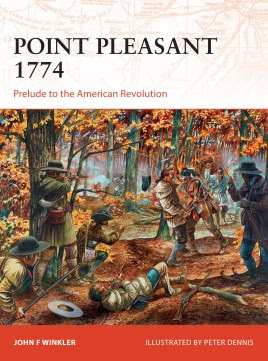
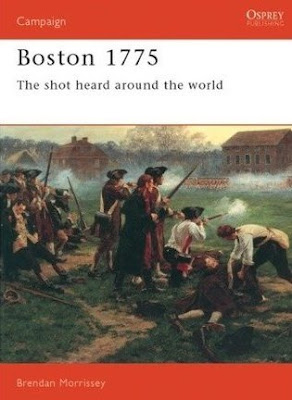

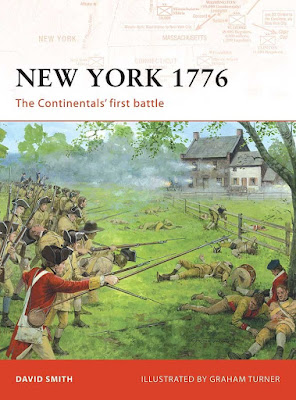









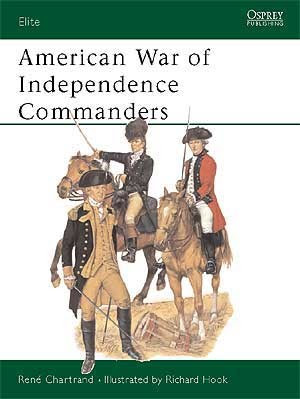











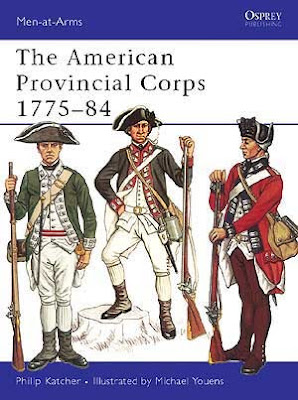











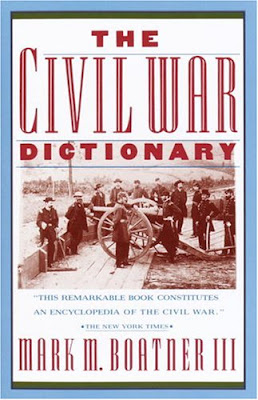









No comments:
Post a Comment